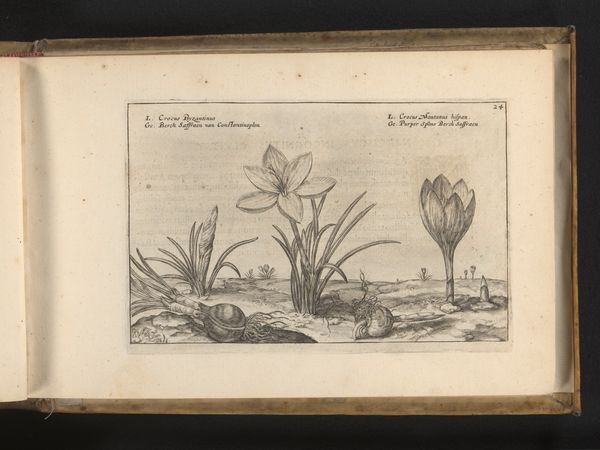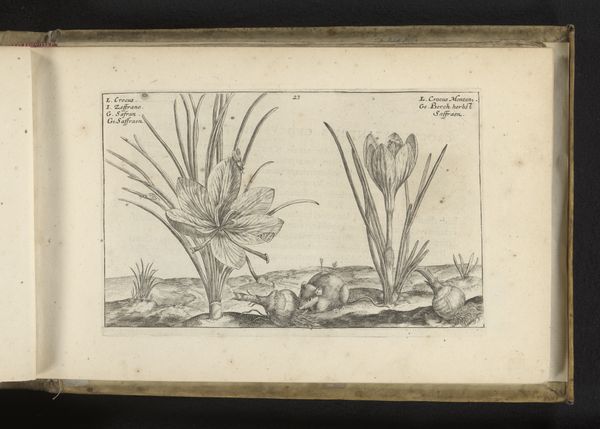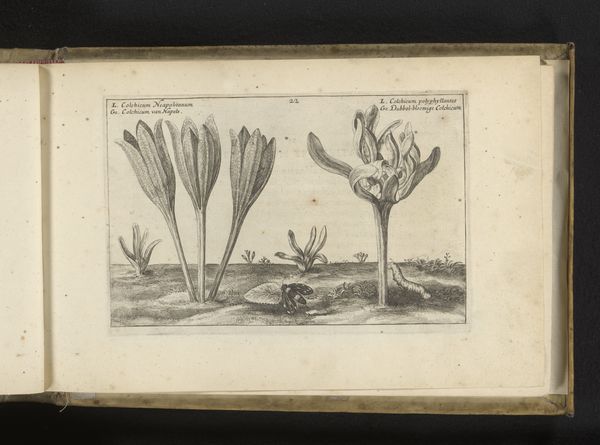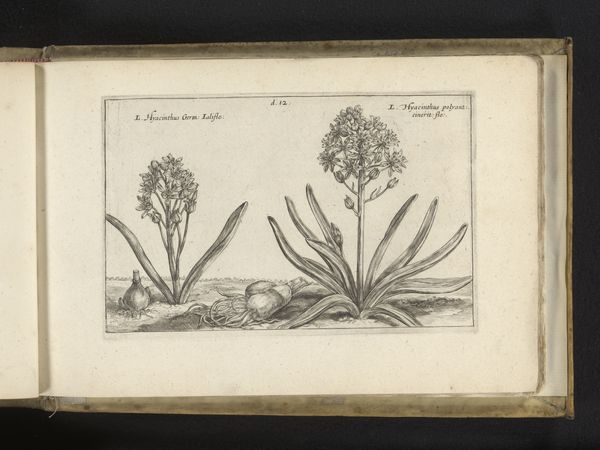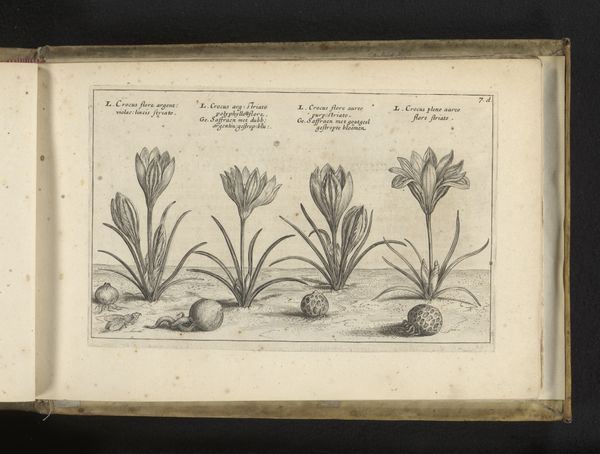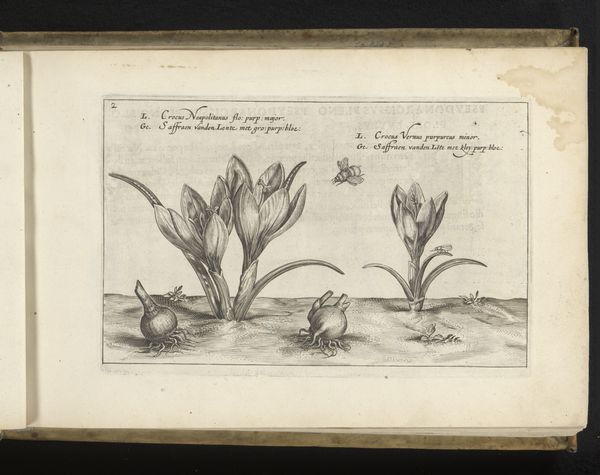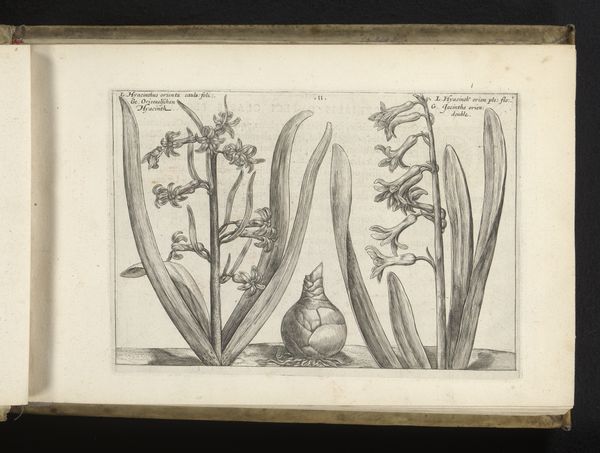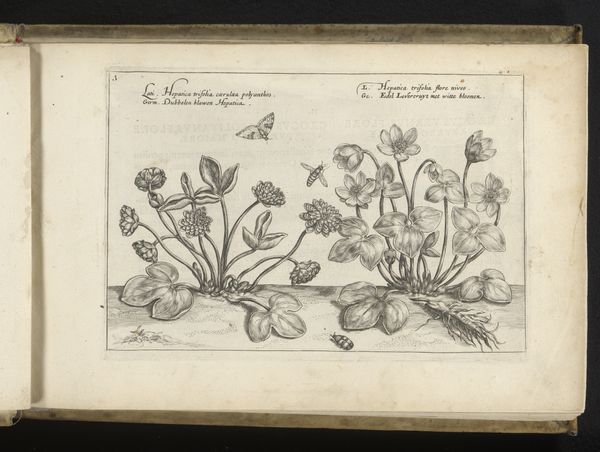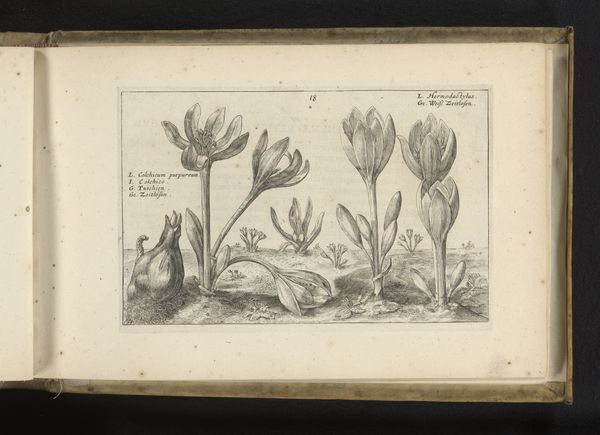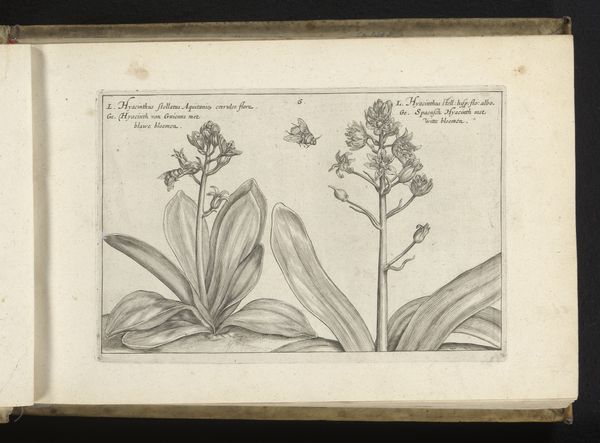
drawing, paper, ink, pen, engraving
#
drawing
#
aged paper
#
toned paper
#
sketch book
#
flower
#
paper
#
personal sketchbook
#
ink
#
pen-ink sketch
#
pen and pencil
#
pen work
#
sketchbook drawing
#
pen
#
storyboard and sketchbook work
#
northern-renaissance
#
sketchbook art
#
engraving
Dimensions: height 136 mm, width 207 mm
Copyright: Rijks Museum: Open Domain
Editor: Here we have "Droogbloeier en Colchicum lusitanum" by Crispijn van de (II) Passe, created in 1617. It looks like a page from a sketchbook, rendered in pen and ink. I'm curious about what seems to be included alongside the flowers – insects! What stands out to you in this piece? Curator: For me, it's the confluence of craft, labor, and early scientific inquiry evident in the drawing. This wasn't merely artistic expression; it's documentation, born from specific materials, the artist's labor, and the printing process. The pen, the ink, the paper – all commodities in 17th century Holland. Consider the engraver's skill to meticulously replicate such detail; this was labor intensive, and destined for a specific consumer. How do you think the materiality influences the reception of this imagery? Editor: That's interesting. I hadn't really considered it in terms of production and consumption. It makes me think about the value placed on these kinds of botanical studies. Is the paper itself also important? Curator: Absolutely! The paper wasn’t just a neutral ground; its production involved specific skills and materials, affecting the final product’s cost and accessibility. Also, what purpose did this image serve? It isn't high art displayed at someone's place. This likely was part of a series, bound and distributed to a certain audience; it may be aimed at medical practicioners as herbal handbooks were in wide distribution at the time, what do you think about it? Editor: I hadn't thought about the intended audience. That shifts my perspective quite a bit. The drawing transforms from a simple sketch into a product with a purpose. Curator: Precisely. By examining the materials and mode of production, we gain insight into the socio-economic context and intended use of this work. Editor: I'm walking away with a whole new understanding of how to look at drawings - considering not just the 'what' but the 'how' and 'why'. Thanks for sharing that approach!
Comments
No comments
Be the first to comment and join the conversation on the ultimate creative platform.
